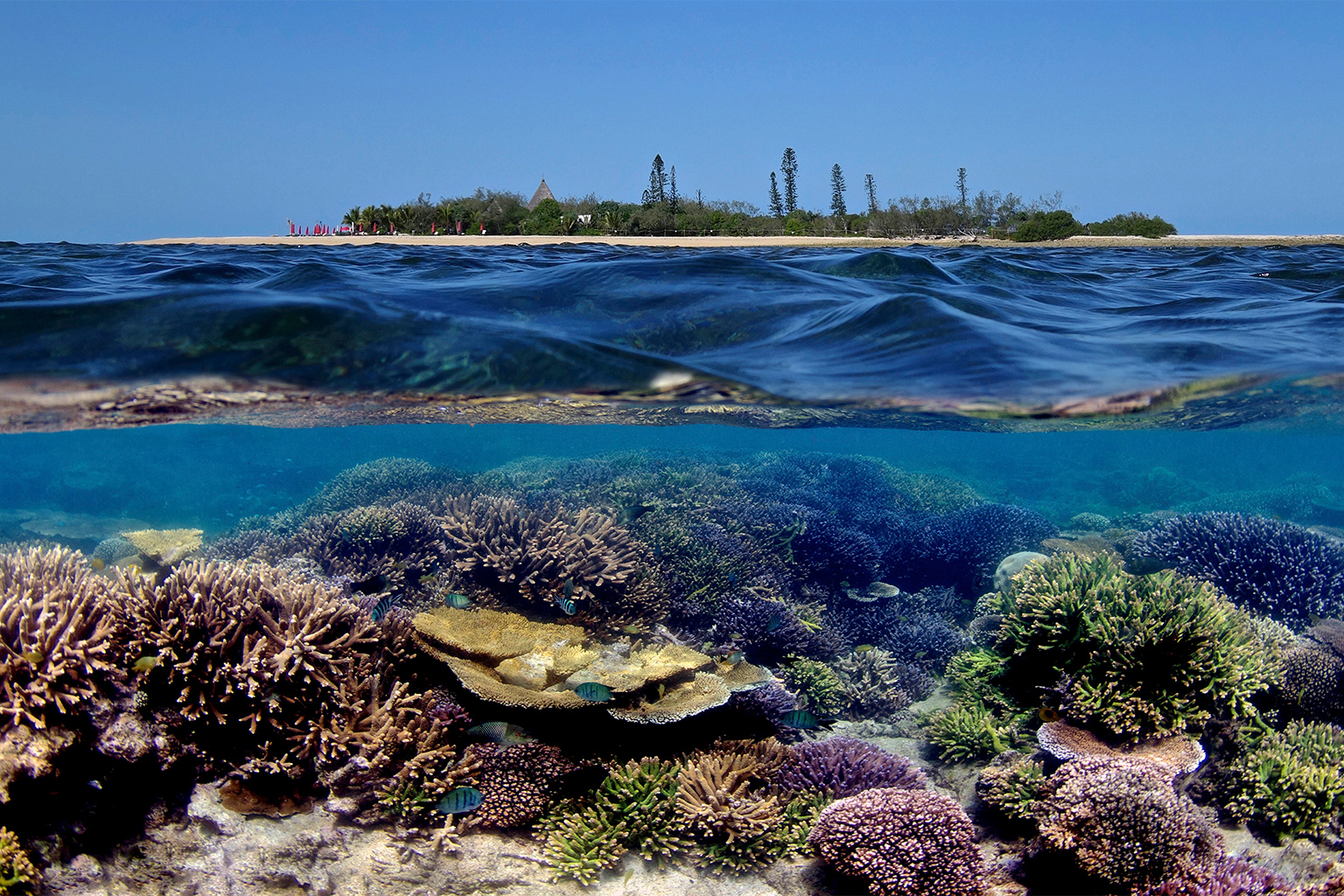- New Caledonia, an overseas territory of France in the Pacific, recently announced that it would highly protect 10% of its economic exclusive zone (EEZ).
- These new highly protected areas will be off-limits to industrial activities such as fishing, drilling and mining.
- A decade ago, New Caledonia designated its entire EEZ as a marine protected area, the Natural Park of the Coral Sea, but industrial activities were permitted across 97.6% of that area at the time.
The government of New Caledonia recently announced that it would highly protect 10% of its ocean to safeguard ecologically important marine areas for sea turtles, sharks, dolphins, whales and seabirds.
A decade ago, New Caledonia, an overseas territory of France, located in the western Pacific Ocean, already established its entire 1.3-million-square-kilometer (502,000-square-mile) exclusive economic zone (EEZ) as a marine protected area (MPA) — an area known as the Natural Park of the Coral Sea. However, only 2.4% of this park was highly protected, where industrial activities like fishing, drilling and mining were prohibited. These activities were permitted in the remaining 97.6%.
On Oct. 18, the New Caledonian government designated an additional 7.6% of its EEZ to be highly protected, meaning that industrial activities are now prohibited in 10% of the EEZ.
“The Natural Park of the Coral Sea is a biological and cultural sanctuary,” Giuseppe Di Carlo, director of the Pew Bertarelli Ocean Legacy Project, a group that helped orchestrate these new protections, said in a statement. “By protecting one-tenth of the park’s vibrant waters, the government has started to conserve internationally significant ecosystems, habitat for an array of unique marine life, and areas that are culturally important to New Caledonia’s local Kanak communities.”
The newly protected areas will preserve habitat and migratory corridors for various species, including whales, turtles and seabirds. They will also help safeguard ecologically important coral reefs, seamounts, and a deep-sea trench that reaches a depth of more than 7,000 meters (23,000 feet).

Various stakeholders, including New Caledonia’s government, the fishing industry, NGOs, and Indigenous Kanak communities, worked in collaboration to establish these new protections.
“This collaborative work was necessary so that the balance of the park was preserved,” Jeremie Katidjo Monnier, New Caledonia’s minister of the environment, said in a statement in French.
“The Oceanian dimension, with the Kanak vision of the ocean, was integrated into the decree,” he added.
New Caledonia’s decision to highly protect 10% of its EEZ is helping to support the implementation of the Kunming-Montreal Global Biodiversity Framework, an agreement that calls for the protection of 30% of the world’s ocean by 2030.
Right now, only about 8.2% of the global ocean has been placed under protection, and only 2.9% of that area is highly protected, according to data collected by the Marine Protection Atlas. Only nine countries, including France, have protected at least 10% of their EEZs. New Caledonia’s MPA protection is counted as part of France’s efforts.
“By designating 10% of the park as highly protected, the [New Caledonian] government has started to uphold the commitment it made when establishing the park nearly a decade ago,” Di Carlo said. “Progress has been slow — and there is still much to do — but this important step forward will help preserve New Caledonia’s marine environment for ocean life, the local community, and future generations.”
Banner image: A green turtle swimming in the waters of New Caledonia. Image by Bastien Preuss via Wikimedia Commons (CC BY-SA 4.0).
Elizabeth Claire Alberts is a senior staff writer for Mongabay. Follow her on X, previously known as Twitter, @ECAlberts.
Pacific alliance adopts moratorium on deep-sea mining, halting resurgent PNG project
